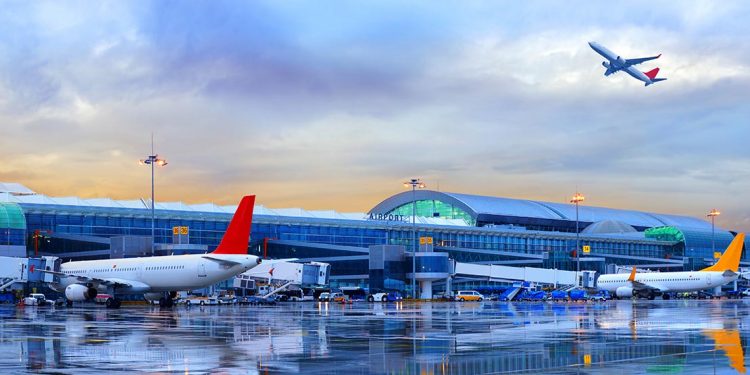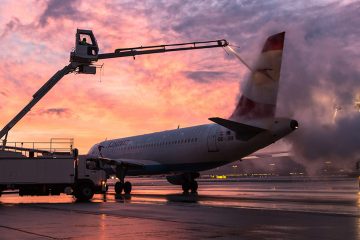Flying for the First Time? This is the Guide You Need!
Get Prepared for Every Step of the Process
Airports are daunting places, even for seasoned travelers. Often navigating through the airport is the most stressful aspect of the travel experience.
If you can manage it, flying out of smaller airports is the way to go. With only a few gates to choose from, it’s impossible to get lost. Plus fewer people means there’s less of a rush to get into the line for security and an overall low-pressure experience as you prepare for your flight.
However, sometimes departing from big airports is unavoidable. In such cases you are going to be battling swarms of people and having to navigate long halls of gates. That’s where the air travel hacks come into play, to masterfully make your way through the flight aspect of your trip.
If it’s your first time flying, this guide has you covered. We’ll take you through each step of the flight process and give you some tips and tricks to save yourself stress along the way.
Pre-Airport Prep
There are plenty of things you can do prior to arriving at the airport to make the whole experience go more smoothly. An efficient packing job is the first step as lugging around heavy suitcases, a backpack and the like merely adds to an already stressful situation.
Packing as light as possible is always best, but if you think you’ll be close to the airline’s baggage weight limit, make sure to weigh your bag on a bathroom or travel bag scale before leaving the house to ensure it’s under the limit. This will save you time, as you’ll clear check-in with one smooth step, and keep you from having to pay exorbitant overweight baggage fees.
Packing helpful items such as a multiple outlet extension cord will also help alleviate stress for your future self. Airports are filled with options for charging your electronic devices, but much of the time there are few available. Having a multi-outlet extension cord with you is the perfect solution — and since you’ll have extras, you can even share and perhaps make a new friend or two.
The more you do ahead of time the better. Most airlines allow you to check in online 24 hours ahead of time. If you do so right at the 24-hour point, you might be able to upgrade to a better seat for cheap or even for free.
You can print out your boarding pass, or even have it sent directly to your smart phone, making a paper copy unnecessary. Printing out baggage tags is now possible too, which means avoiding long check-in lines.
Instead, depending on the airport, you’ll simply check your bag at the curb or at a separate baggage drop-off area inside. Either option will save you time, something every first-time flyer will appreciate.
You should also familiarize yourself with the layout of the airport before you arrive. Most airports have a map on their website, which can make navigating it much easier
If you’re going to have a long layover in between flights, check the airport website to find out what amenities may be available. Some airports have specific sleeping areas where you can catch up on your rest, and some even feature showers, complete with body wash and towels.
No matter where you’re going, arriving clean and well-rested sets the tone for a much better trip ahead.
On Your Way
When it comes to flying, the earlier you arrive, the better. You never know what might happen when you get there (and of course you don’t want to miss your flight).
Facing a long security line when you’re already running late is enough to send stress levels through the roof. It’s generally recommended to arrive two hours before a domestic flight and three hours prior to an international flight.
If you sail through, you can use that extra time to relax or catch up on reading or work, making the entire experience much less stressful.
If you’ve been stuck in traffic or something else causes you to arrive late anyway, ask the security agent politely if you can go through the priority passenger line to help speed things up.
Check In
The first thing to do upon arrival at the airport is check in. There will be a row of check-in counters each designated for a different airline.
If you didn’t print your boarding pass or baggage tags prior to arrival, there are sometimes even kiosks before the line starts where you can do so electronically, saving you time at the counter.
As previously mentioned, if you’ve already checked in online and secured your boarding pass and tags, you can sometimes bypass the check-in counter and bring your bags to a separate drop-off area. In some cases, however, you may still have to wait in the check-in line to give the attendant your luggage.
They will weigh your luggage at the check-in counter or wherever you drop your bags off. If you’re worried your luggage might be over the weight limit, go to any one of the shops in the airport and request a large shopping bag.
You can pull out items from your suitcase and place them in there to lighten the load. Since it will look as though you just purchased something, the airline won’t charge you for an extra carry-on.
If you don’t have any bags to check and have already checked in you can proceed straight to security upon arrival.
If you arrive at the airport only to discover your flight has been cancelled or delayed, make sure you know what your rights as an air passenger are so you can handle the situation with as little stress as possible. And make sure you are prepared with things to do during a flight delay so you are occupied!
Security
Knowing what to expect from security is essential to ensuring the process goes smoothly. The last thing you want is to be that annoying person in the long security line who has no idea what goes where.
While you can’t bring water through security, you can bring an empty water bottle and then fill it up once you get past the security checkpoints. As TSA requires that liquids (up to 3.4 ounces only) be separated into clear one quart-sized plastic bags, it’s a good idea to bring a couple of extra plastic bags just in case you lose one or end up buying a travel-size liquid product at the last minute.
Instead of placing tiny items such as jewelry, change or a FitBit through the X-ray machine in a separate bin, put them in your purse, a bag or in a pocket of a jacket to help clear up space so the line will move faster. As well, be sure to take any batteries out of items such as electric toothbrushes; vibrating bags can not only be rather embarrassing, but they’ve even grounded flights.
You surely don’t want to be that passenger.
In general, make sure to familiarize yourself with the TSA protocols beforehand to avoid holding things up.
When it comes to airlines there are a lot of things to take into consideration. From budget-friendly to luxury these are the best airlines in the world.
Find Your Gate
Once you’ve made it through security it’s time to find your gate and begin waiting. In larger airports, the hallway where gates are located can be quite long, making it important to pay attention to signs so you aren’t walking for 10 minutes in the wrong direction.
After you’ve located your gate, simply take one of the chairs and wait for the announcement for boarding. Airlines board in a certain order, so just listen for when your section of the plane is called out.
Take this time to fill up your water bottle, grab any food you might want to bring on the flight and use the washroom. Then simply make sure you have your ID and boarding pass ready for when it’s time to board.
If you are a bit nervous about flying, familiarize yourself with some techniques that you can start using as the flight approaches to help calm your nerves.
Where to Find Help
If you do get lost, most airports have an information desk staffed with agents who can help. Displays listing all arrival and departure times, along with accompanying gates, can be found throughout the airport.
If your flight is seriously delayed or canceled, don’t follow the herd that’s heading to the gate attendant or you’ll end up standing in a long line of frustrated customers. Instead, call the airline’s 800 number. The representative who answers can do anything the in-person agent can.
After Landing
Confusion can easily set in when landing at an unfamiliar airport, but the simplest way to navigate it is to simply follow the crowd to baggage. If you’re still unsure, most airports have large, easy-to-follow signs that will direct you to baggage claim.
Once there, don’t crowd the conveyor; instead, stand back so everyone can see when their bags come around and will be able to more easily retrieve them.







